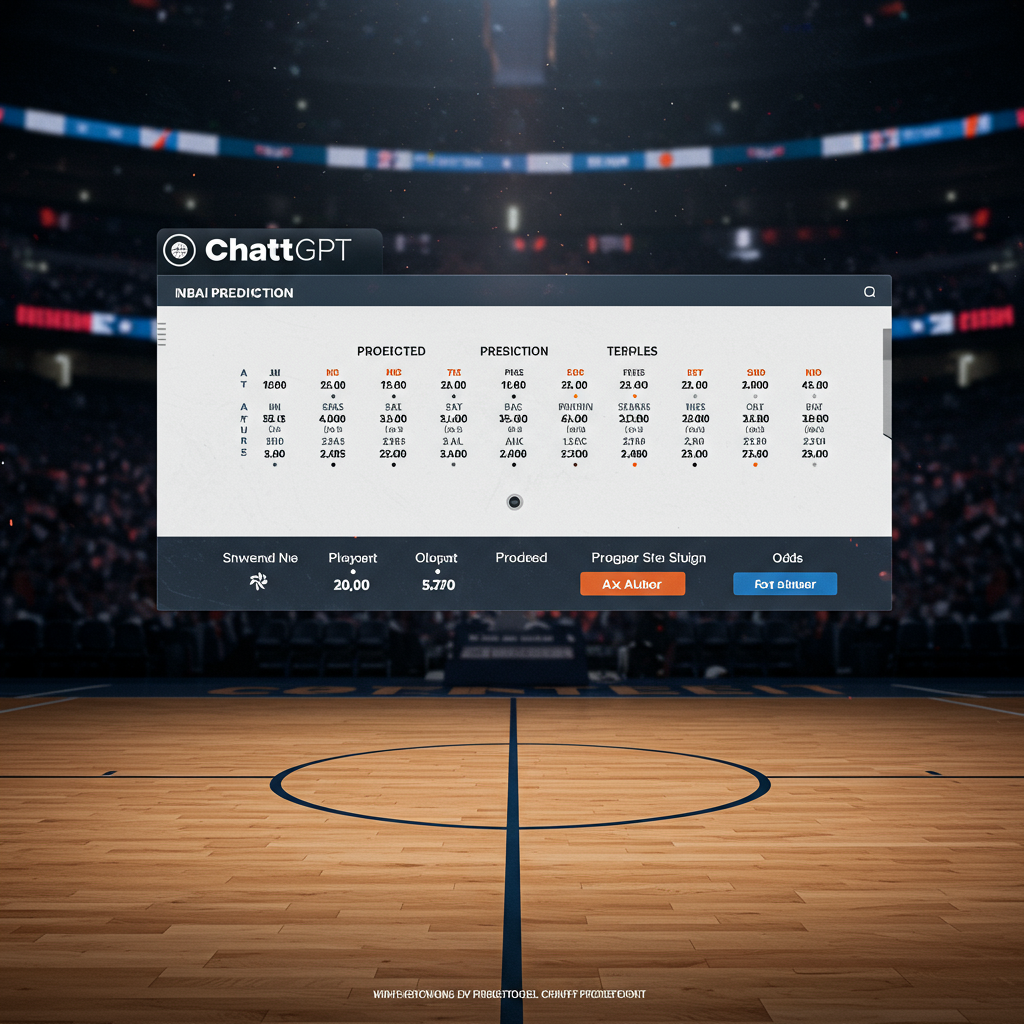The 2025 NBA Draft class is generating significant buzz, and as teams look ahead, predictive tools are coming into play. In an interesting experiment, USA TODAY Sports turned to artificial intelligence, specifically the AI chatbot ChatGPT, to forecast the initial selections. While AI isn’t quite ready to assemble a complete, error-free mock draft from start to finish, it offered intriguing predictions for the crucial lottery phase – the first 14 picks.
The endeavor wasn’t without its challenges. Attempting to generate a full first-round mock draft with ChatGPT proved difficult beyond the top 10 selections. The AI struggled, at times suggesting players already in the NBA or individuals who hadn’t declared for the 2025 draft, requiring multiple attempts and corrections to coax out a list comprised solely of eligible, unique prospects for the top 14. This highlights a current limitation of general AI models in handling the nuanced, ever-changing landscape of sports prospects compared to dedicated human analysts or specialized data models, which some researchers note are specifically designed for structured basketball data.
Despite the hurdles, a list of the first 14 lottery picks, as predicted by this particular ChatGPT simulation, was compiled. Here’s how the AI sees the top of the 2025 NBA Draft unfolding:
ChatGPT’s 2025 NBA Lottery Predictions
- Dallas Mavericks: Cooper Flagg, F, Duke
- San Antonio Spurs: Dylan Harper, G, Rutgers
- Philadelphia 76ers: V.J. Edgecombe, G/F, Baylor
- Charlotte Hornets: Kon Knueppel, W, Duke
- Utah Jazz: Khaman Maluach, C, Duke
- Washington Wizards: Ace Bailey, G/W, Rutgers
- New Orleans Pelicans: Tre Johnson, G/W, Texas
- Brooklyn Nets: Jeremiah Fears, G, Oklahoma
- Toronto Raptors: Thomas Sorber, F/C, Georgetown
- Houston Rockets: Collin Murray-Boyles, G/W, South Carolina
- Portland Trailblazers: Derik Queen, C, Maryland
- Chicago Bulls: Noa Essengue, F, Ratiopharm Ulm (Germany)
- Atlanta Hawks: Nolan Traoré, G, Saint-Quentin (France)
- San Antonio Spurs: Asa Newell, F, Georgia
ChatGPT Analysis: “Unanimous top pick; versatile two-way star, Wooden winner.”
ChatGPT Analysis: “Elite driver and scorer, shooting remains a question; consensus No. 2.”
ChatGPT Analysis: “Athletic playmaker and defensive force; top fit for Philly”
ChatGPT Analysis: “Sharpshooting wing with high floor; alternative to Edgecombe.”
ChatGPT Analysis: “Center with massive upside: elite rim protection, shooting upside.”
ChatGPT Analysis: “Scoring wing; draft stock wobbles due to skipped workouts, but talent keeps him high.”
ChatGPT Analysis: “Dynamic scorer and facilitator; fits well with New Orleans’ team structure.”
ChatGPT Analysis: “High school track record and elite ball-handling; playmaking upside.”
ChatGPT Analysis: “Freshman All-Big East big; floor-spacing and shot-blocking ability.”
ChatGPT Analysis: “3-and-D wing and late first-round sleeper.” (Notably, the 10th pick is early in the first round, not late).
ChatGPT Analysis: “Skilled big, draft stock ~11.”
ChatGPT Analysis: “Athletic forward with upside.”
ChatGPT Analysis: “Pro guard, Euro floor-general.”
ChatGPT Analysis: “6’11” versatile forward.”
AI vs. Human Consensus: Where Predictions Align and Diverge
One of the most striking takeaways when comparing this ChatGPT list to broader draft analysis is the near-universal agreement at the very top. Multiple AI platforms, including Microsoft Copilot, Meta AI, Grok AI, and Google Gemini, alongside human expert mock drafts, unanimously project Cooper Flagg as the No. 1 pick and Dylan Harper as the No. 2 pick. This strong consensus across diverse models and human evaluation suggests a high degree of certainty regarding these two prospects.
However, the picture becomes far less clear beyond pick No. 2. The AI predictions diverge significantly throughout the rest of the first round. While players like V.J. Edgecombe, Ace Bailey, Kon Knueppel, and Tre Johnson frequently appear in the top 10 across various AI simulations, their specific ranking and team fit predictions vary considerably compared to each other and to human expert analysis. For example, a recent human mock draft placed Tre Johnson at #3 and VJ Edgecombe at #4, different from ChatGPT’s order.
Furthermore, specialized data models built by humans for draft prediction, which leverage extensive college basketball statistics and metrics like Estimated Plus/Minus (EPM), offer another layer of comparison. While such models also confirm Flagg at No. 1, their rankings diverge from both general AI and human consensus lower down. One data model notably ranked Asa Newell at No. 2, a stark contrast to ChatGPT placing him at No. 14. This highlights that different analytical approaches, whether human scouting, general AI pattern matching, or specialized statistical modeling, yield varied results, especially outside the consensus top tier.
The struggles ChatGPT faced in completing the list and the noted inconsistencies (like calling pick 10 “late”) underscore that while AI can process vast amounts of data and identify potential trends, it currently lacks the nuanced understanding of scouting reports, team needs, player development arcs, and eligibility rules that seasoned human analysts and specialized predictive models possess. It seems AI is best used currently to validate consensus at the peak of the draft class rather than providing definitive rankings throughout.
For reference, the actual 2025 NBA Draft event is scheduled as follows:
Date: June 25-26, 2025
Time: 8 p.m. ET each night
Location: Barclays Center, Brooklyn, New York
How to Watch: ESPN, ABC (first round only)
As the draft approaches, expect more predictions from various sources, both human and artificial, offering differing visions of how the next class of NBA stars will enter the league.


